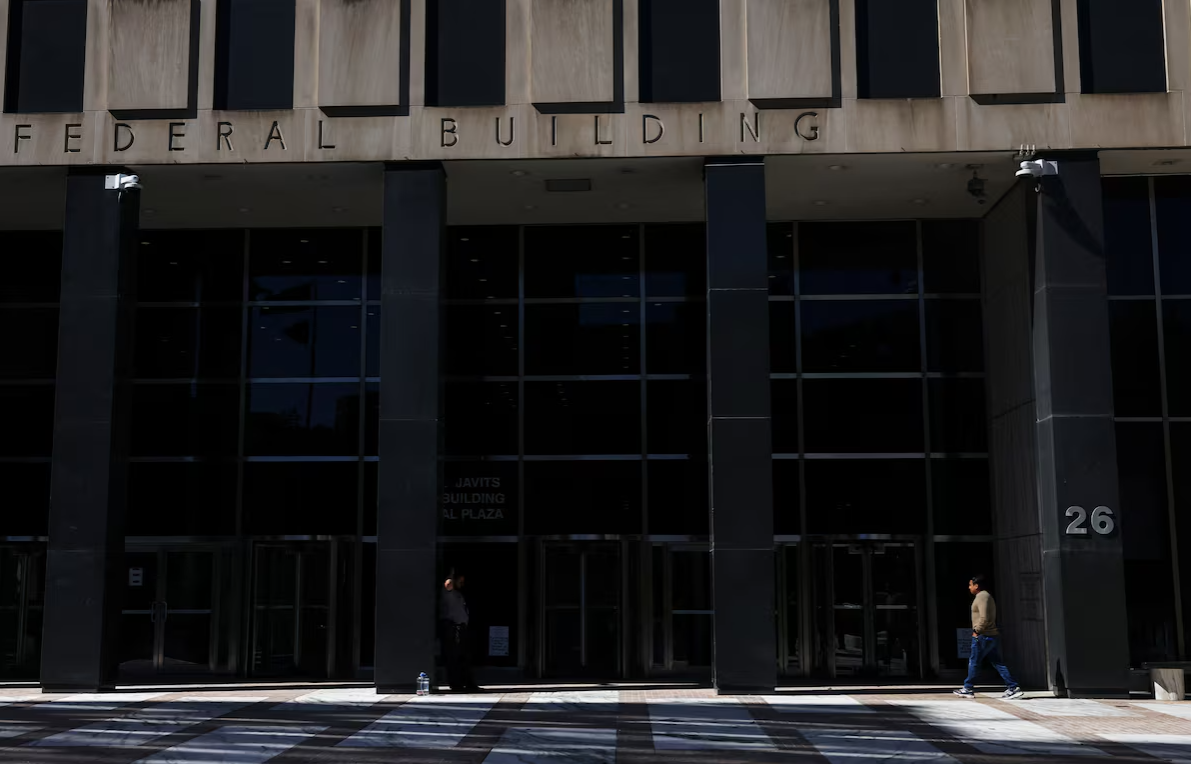Hera to measure Dimorphos space rock that Dart probe deliberately hit
Final preparations are under way to send a European spacecraft to an asteroid to discover what happened when a Nasa probe deliberately slammed into the space rock two years ago.
The European Space Agency’s Hera mission will survey the impact site and make detailed measurements of the battered rock, Dimorphos, to help researchers hone their strategies for defending Earth should a wayward asteroid ever threaten the planet in the future.
Hera is due to launch on Monday aboard a SpaceX Falcon 9 rocket from Cape Canaveral in Florida at 10.52am local time (3.52pm BST). All being well, the probe will swoop past Mars in March next year and reach the asteroid more than 110m miles (177m km) from Earth in December 2026.
“It’s a series of breathtaking moments,” Paolo Martino, the lead engineer and deputy project manager said of the mission from ESA’s base in Noordwijk, the Netherlands. “The first one is surviving the launch.”
Beyond the routine risks of poor weather and technical problems that can keep missions on the launchpad, there have been uncertainties over whether the SpaceX rocket will be allowed to fly. Last week, the Falcon 9 was grounded by the US Federal Aviation Administration for the third time in three months after it experienced an upper stage malfunction as it fell back to Earth.
Named after the Greek goddess of marriage, women and family, Hera will report back on the state of Dimorphos, a 150-metre-wide asteroid that orbits a larger, 780-metre-wide parent body called Didymos. In September 2022, Nasa’s Double Asteroid Redirection Test (Dart) probe crashed into Dimorphos at 14,000 miles per hour, showering millions of tonnes of rock into space and altering the asteroid’s orbit.
As a first test of Earth’s planetary defences, the Dart mission was declared a success. But scientists need more information about the impact and Dimorphos itself to ensure the lessons learned can be used to deflect asteroids of different sizes and structures that might one day threaten Earth.
“Dart managed to change the orbit of Dimorphos very efficiently, even beyond expectations, and now the scientists need to know in detail what happened and what kind of effects the impact had on the asteroid,” Martino said.
When Dart thumped into Dimorphos, the momentum of the probe and the force from debris ejected from the asteroid knocked 33 minutes off its orbital period around Didymos. The collision reshaped the asteroid and sent a plume of dust and rock thousands of miles into space.
Hera’s instruments will record the precise size, shape, mass and orbit of Dimorphos so researchers can work out how efficiently momentum was transferred from the Dart probe to the space rock and what state the asteroid was left in.
For a closer look at Dimorphos, Hera will release two shoebox-sized probes called cubesats. These will map the surface in fine detail, measure any dust around the body, and deploy a ground-penetrating radar to assess the asteroid’s internal structure. The cubesats will then attempt to land on the asteroid and take further measurements.
“The Dart mission was a spectacular success as a demonstration of asteroid deflection technology, but as a science experiment it generated as many questions as it provided answers,” said Prof Gareth Collins, a member of the Hera science team at Imperial College London. “Our hope is that Hera will answer those questions and more.”
One mystery is how Dart changed Dimorphos’s orbit so much. Scientists expected the Nasa probe to punch a 20-metre crater in the asteroid and shave little more than a minute off its orbital period. The more substantial shift in orbit suggests the impact completely reshaped the asteroid. “We think this might be because Dimorphos has a rubble-pile internal structure, but we only have a few close-up images of its surface to work with,” said Collins.
Of more than 1,600 near-Earth asteroids on ESA’s risk list, none are gigantic planet-killers that could destroy Earth in the next century. More concerning are the smaller and far more numerous space rocks that have the potential to take out cities, countries and continents. If one of these were spotted years in advance, scientists would aim to launch a reconnaissance mission to confirm its trajectory, composition and mass, and if it posed a real danger, launch another mission to knock it off course.
Armed with data from the Hera mission, researchers will work out the range of asteroids that can be deflected with colliding spacecraft and which space rocks might require more dramatic interventions. “If we ever have a real threat in the future, we’ll be in a position to choose the best technique,” said Martino.




